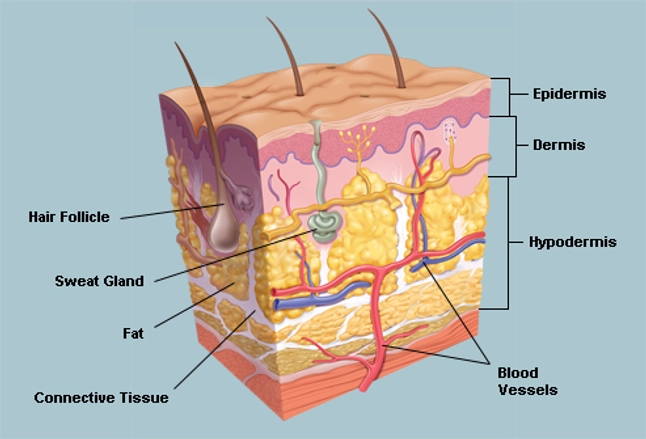
kali nie #BeautyMadnessWithBabyNurul nak buat sharing sikit.
erm... this one basic things dulu la ye..
heee.. sama sama kita kumpul ilmu..
korang boleh rujuk post lepas untuk check balik part 1 and part 2.
since subjek ni dah jadi macam drama berepisod.. haha..
Skin Part 1 - Function
Skin Part 2 - Epidermis.
Skin Part 3 - Dermis
Skin - SKIN COLOR

Human skin shows high skin color variety from the darkest brown to the lightest pinkish-white hues. Human skin shows higher variation in color than any other single mammalian species and is the result of natural selection. Skin pigmentation in humans evolved to primarily regulate the amount of ultraviolet radiation (UVR) penetrating the skin, controlling its biochemical effects
The actual skin color of different humans is affected by many substances, although the single most important substance determining human skin color is the pigment melanin. Melanin is produced within the skin in cells called melanocytes and it is the main determinant of the skin color of darker-skinned humans.
- The skin color of people with light skin is determined mainly by the bluish-white connective tissue under the dermis and by the hemoglobin circulating in the veins of the dermis.
- The red color underlying the skin becomes more visible, especially in the face, when, as consequence of physical exercise or the stimulation of the nervous system (anger, fear), arterioles dilate
There are at least five different pigments that determine the color of the skin. These pigments are present at different levels and places.
- Melanin: It is brown in color and present in the basal layer of the epidermis.
- Melanoid: It resembles melanin but is present diffusely throughout the epidermis.
- Carotene: This pigment is yellow to orange in color. It is present in the stratum corneum and fat cells of dermis and superficial fascia.
- Hemoglobin (also spelled haemoglobin): It is found in blood and is not a pigment of the skin but develops a purple color.
- Oxyhemoglobin: It is also found in blood and is not a pigment of the skin. It develops a red color.
There is a correlation between the geographic distribution of UV radiation (UVR) and the distribution of indigenous skin pigmentation around the world. Areas that highlight higher amounts of UVR reflect darker-skinned populations, generally located nearer towards the equator. Areas that are far from the tropics and closer to the poles have lower concentration of UVR, which is reflected in lighter-skinned populations
In the same population it has been observed that adult human females are considerably lighter in skin pigmentation than males. Females need more calcium during pregnancy and lactation, and vitamin D which is synthesized from sunlight helps in absorbing calcium. For this reason it is thought that females may have evolved to have lighter skin in order to help their bodies absorb more calcium
The Fitzpatrick scale is a numerical classification schema for human skin color developed in 1975 as a way to classify the typical response of different types of skin to ultraviolet (UV) light:
- I Always burns, never tans -- Pale, Fair, Freckles
- II Usually burns, sometimes tans -- Fair
- III May burn, usually tans -- Light Brown
- IV Rarely burns, always tans -- Olive brown
- V Moderate constitutional pigmentation -- Brown
- VI Marked constitutional pigmentation -- Black
Love,
Cik Purple
No comments:
Post a Comment